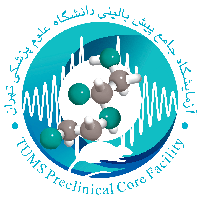Optical Imaging

Optical imaging is a non-invasive imaging modality that allows visualization of inside the body. Optical imaging uses non-ionizing radiation such as visible, ultraviolet, and infrared light to obtain detailed images of organs and tissues as well as smaller structures including cells and even molecules. These types of light generate images by exciting electrons without causing the damage that can occur with ionizing radiation used in some other imaging techniques. These images are used by scientists for research and by clinicians for disease diagnosis and treatment. Because it is much safer and significantly faster, optical imaging can be used for lengthy and repeated procedures over time to monitor the progression of disease or the results
|
Optical imaging is a non-invasive imaging modality that allows visualization of inside the body. Optical imaging uses non-ionizing radiation such as visible, ultraviolet, and infrared light to obtain detailed images of organs and tissues as well as smaller structures including cells and even molecules. These types of light generate images by exciting electrons without causing the damage that can occur with ionizing radiation used in some other imaging techniques. These images are used by scientists for research and by clinicians for disease diagnosis and treatment. Because it is much safer and significantly faster, optical imaging can be used for lengthy and repeated procedures over time to monitor the progression of disease or the results of the treatment. Optical imaging takes advantage of the various colors of light in order to see and measure many different properties of an organ or tissue at the same time. Other imaging techniques are limited to just one or two measurements. Optical imaging can be combined with other imaging techniques, such as MRI or x-rays, to provide enhanced information for researcher. Disadvantage of optical imaging include low depth penetration and limited clinical translation.
Optical Imaging Applications • Oncology • Tumor diagnosis/quantification • Photodynamic therapy evaluation • Inflammation and Infectious Disease • Renal function • Neuroscience Studies • Immunology Studies • Cardiovascular Studies • Gene Expression Studies • Drug Delivery processes Studies • Pharmaceutical Studies • Drug Biodistribution • Gastrointestinal • Bioluminescence Imaging • Stem cell therapy
|
of the treatment





